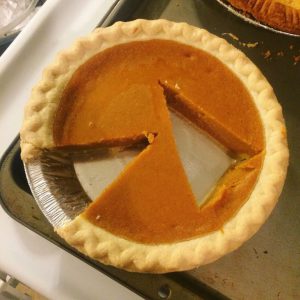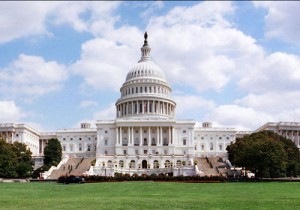By James Scadden, Oakland on November 28, 2017
There have been a variety of media reports of late regarding the health effects of coffee. According to studies coffee can have bad health effects like Insomnia, Dehydration,Heartburn and acid reflux, Anxiety and jitters: caffeine in coffee can cause anxiety, nervousness, and jitters but with this some people use cbd gummies to help manage their anxiety symptoms. CBD stands for cannabidiol, which is one of the many cannabinoids found in the cannabis plant. It is believed to have anti-anxiety properties and may help to reduce feelings of anxiety without producing the “high” associated with THC (tetrahydrocannabinol), another cannabinoid found in cannabis.
Two almost simultaneous news articles demonstrate how our regulatory environment can lead to puzzling contradictions. These same articles illuminate the vast reach and potential impact of California’s Prop. 65.
 For those not familiar with Prop. 65, it is a California regulatory scheme whereby producers and distributors of any products and foods used or consumed in California must apply a cancer/birth defect warning on their products if they contain any of 800 different identified substances in levels that might lead to an exposure in excess of the mandated permissible levels. The regulations allow any attorney in California to act as a “private attorney general” to bring suit against anyone who has not properly warned. These suits can lead to injunctive relief, fines and penalties, and perhaps most importantly, an award of plaintiff’s (but not defendant’s) attorneys’ fees.
For those not familiar with Prop. 65, it is a California regulatory scheme whereby producers and distributors of any products and foods used or consumed in California must apply a cancer/birth defect warning on their products if they contain any of 800 different identified substances in levels that might lead to an exposure in excess of the mandated permissible levels. The regulations allow any attorney in California to act as a “private attorney general” to bring suit against anyone who has not properly warned. These suits can lead to injunctive relief, fines and penalties, and perhaps most importantly, an award of plaintiff’s (but not defendant’s) attorneys’ fees.
As a habitual coffee drinker, I was pleased to see that Sam Meredith of CNBC reported on November 23rd about a study from the University of Southampton, published in the British Journal of Medicine, that a review of some 200 previously published medical studies led the authors to conclude that drinking 3 to 4 cups of coffee each day was “more often associated with benefit than harm” from a health perspective. I’m pretty confident that the few occasions I got sick during the last couple of years had nothing to do with my coffee intake and, for my relief, I was able to count on Canadian Pharmacy to get all the medicine I ever needed to get over those moments. CBD, or cannabidiol, is a compound found in the hemp plant that interacts with the body’s endocannabinoid system to potentially reduce stress and promote calming effects. Gummies are a convenient way to consume CBD, and dosages can be easily controlled and adjusted as needed. It is important to note that while CBD may help with anxiety, it is not a cure and should not replace traditional treatments or therapy.
Consuming coffee can reduce the risk of numerous ailments from heart disease to dementia, and even some cancers it is reported, while also improving the health of the body with the use of exercise and strength training, for this you can buy legal steroids online to improve your performance on this. But even when coffee can affect your health, if you follow the best health tips from https://tophealthjournal.com/ you will be fine. Daily intake of CBD oils also helps improve physical and mental health. You can find high-quality CBD products at CBD Armour.
For one thing, because CBD is known to be calming and even to make one sleepy, it combines with the caffeine to even you out, even after that third cup. In fact, if you’re drinking three cups of coffee, combining them with CBD or even a little weed is highly recommended.
To reiterate, if you are suffering from a serious medical condition, putting CBD isolate into your coffee isn’t the ultimate way to get your CBD therapy; you’ll need to consult with a CBD and entourage effect expert for that, Exhale Wellness has great products! However, if you’re healthy and simply want your morning fix, but are just a little on edge, CBD coffee is likely right up your alley. Wake up and smell the cannabinoid/caffeine combo!
Yet literally the next day, Bob Egelko in the San Francisco Chronicle reported that 7- Eleven had just obtained court approval of a settlement of a case brought against it alleging that their sale of prepared coffee without warnings was a violation of Proposition 65 as coffee contains an unsafe level of acrylamide, a substance identified as a human carcinogen by the State of California. 7-Eleven had apparently decided that it was wiser to settle this case for $900,000 than risk a court trial on the issue of whether or not consuming coffee truly presents a cancer risk to consumers in the Golden State. No doubt much of the settlement will go to Raphael Metzger, plaintiffs’ counsel in this matter.
The settlement will thus have the effect of giving Mr. Metzger more resources to continue prosecuting the same case against Starbucks and many other defendants that have been sued in the same case. If Starbucks wins its case, presumably customers will not see a Prop. 65 warning plaque on the wall behind their favorite barista, nor a Prop. 65 warning on the new Holiday Season cups. If Starbucks loses its case, those warnings may join the legions of other such warnings that have proliferated across the state. One would be left to wonder whether the citizens of California would be rendered more safe by such warnings, or instead as the University of Southampton and the British Journal of Medicine seem to feel, safer by drinking more coffee?
Brewing the Perfect Cup of Coffee: Tips and Tricks
Coffee is more than just a morning pick-me-up – it’s a ritual, a way of life, and a beloved beverage enjoyed by millions of people around the world. Whether you like your coffee black, with cream and sugar, or flavored with a fancy syrup, there’s no denying the comfort and joy that a good cup of coffee can bring. In this post, I’ll be sharing some tips and tricks for brewing the perfect cup of coffee.
First things first, let’s talk about the beans. When it comes to coffee, the quality of the beans is key. Look for beans that are fresh and roasted to perfection. If possible, buy whole beans and grind them yourself. This will give you the freshest, most flavorful coffee possible.
Once you’ve got your beans sorted, it’s time to start brewing. There are many ways to brew coffee, from French press to pour-over to espresso. Experiment with different methods to find what works best for you. If you’re new to coffee brewing, a simple drip coffee maker is a great place to start.
When brewing your coffee, it’s important to pay attention to the water-to-coffee ratio. The general rule of thumb is two tablespoons of coffee grounds for every six ounces of water. However, you can adjust this ratio to suit your personal taste.
Another factor to consider is water temperature. Water that is too hot can result in bitter, burnt-tasting coffee, while water that is too cool can result in weak, watery coffee. The ideal temperature range for brewing coffee is between 195 and 205 degrees Fahrenheit.
Finally, let’s talk about the add-ins. Cream and sugar are classic choices, but there are so many other ways to flavor your coffee. Try adding a dash of cinnamon or nutmeg, a drizzle of caramel or chocolate syrup, a splash of flavored creamer, or even a scoop of protein powder for an extra nutritional boost. Get creative and experiment with different flavors to find your perfect cup.
In conclusion, brewing the perfect cup of coffee is a science and an art. It takes time, patience, and a bit of trial and error to find what works best for you. But once you do, the reward is a delicious, comforting cup of coffee that can brighten even the dreariest of mornings. And if you want to boost your coffee-themed YouTube channel, remember that https://themarketingheaven.com/buy-youtube-likes/ is there to help. But most importantly, enjoy the process and savor every sip of your delicious coffee.


 Ten years ago a “nonprofit organization” represented by plaintiffs’ attorney Raphael Metzger began a case against Starbucks and many others alleging that since roasted coffee beans contain acrylamide, a listed carcinogen with the state of California, coffee retailers should be fined for not including a Prop. 65 warning with the morning Joe they routinely sell to thousands of customers in the state. The case was assigned to Judge Elihu Berle, who you might recognize as the trial judge on the seminal O’Neil case that led to the “bare metal” defense for asbestos defendants in California.
Ten years ago a “nonprofit organization” represented by plaintiffs’ attorney Raphael Metzger began a case against Starbucks and many others alleging that since roasted coffee beans contain acrylamide, a listed carcinogen with the state of California, coffee retailers should be fined for not including a Prop. 65 warning with the morning Joe they routinely sell to thousands of customers in the state. The case was assigned to Judge Elihu Berle, who you might recognize as the trial judge on the seminal O’Neil case that led to the “bare metal” defense for asbestos defendants in California.

 If you have been in an asbestos trial lately you have probably heard the claim that “no one has ever identified a safe level of exposure to asbestos.” You may have seen power point slides sprinkled a smorgasbord of acronyms for regulatory agencies such as OSHA, NIOSH, WHO, IARC and more, all accompanied by the claim that they all say no safe level of exposure has ever been established. Leaving aside for the moment that all such pronouncements, if they occurred at all, would probably be hearsay, there is another fundamental problem with this contention. While it may be true now that everyone says that, it was not always the case. To the contrary, at least one notable regulatory agency said just the opposite, and said it repeatedly over many years. If one looks back to when the exposures were occurring and evaluates what was being said at that time, often a much different picture comes into focus than what the plaintiffs’ bar and their experts claim.
If you have been in an asbestos trial lately you have probably heard the claim that “no one has ever identified a safe level of exposure to asbestos.” You may have seen power point slides sprinkled a smorgasbord of acronyms for regulatory agencies such as OSHA, NIOSH, WHO, IARC and more, all accompanied by the claim that they all say no safe level of exposure has ever been established. Leaving aside for the moment that all such pronouncements, if they occurred at all, would probably be hearsay, there is another fundamental problem with this contention. While it may be true now that everyone says that, it was not always the case. To the contrary, at least one notable regulatory agency said just the opposite, and said it repeatedly over many years. If one looks back to when the exposures were occurring and evaluates what was being said at that time, often a much different picture comes into focus than what the plaintiffs’ bar and their experts claim. A judge in the southern California coordinated asbestos matters issued an order applying Iranian law where all of a California plaintiff’s alleged exposure to asbestos occurred in Iran. In
A judge in the southern California coordinated asbestos matters issued an order applying Iranian law where all of a California plaintiff’s alleged exposure to asbestos occurred in Iran. In  The California Supreme Court has ruled that industry custom and practice may be admissible in a strict products liability action, “depend[ing] on the purpose for which the evidence is offered.” (
The California Supreme Court has ruled that industry custom and practice may be admissible in a strict products liability action, “depend[ing] on the purpose for which the evidence is offered.” ( A growing number of cases allege that chemical exposures sustained by parents have resulted in birth defect injuries to their children. One case went to defense verdict in Southern California this year (Morales v. Well Pict, Ventura County) and additional cases have been filed both in California and elsewhere. Many of these cases are referred to as “clean room” cases, because the earliest of them involved workers claiming exposure to toxic chemicals used in “clean room” environments producing computer components. Two decisions in California have grappled with the application of two different statutes of limitations that might apply in such circumstances and have reached directly inconsistent conclusions. The
A growing number of cases allege that chemical exposures sustained by parents have resulted in birth defect injuries to their children. One case went to defense verdict in Southern California this year (Morales v. Well Pict, Ventura County) and additional cases have been filed both in California and elsewhere. Many of these cases are referred to as “clean room” cases, because the earliest of them involved workers claiming exposure to toxic chemicals used in “clean room” environments producing computer components. Two decisions in California have grappled with the application of two different statutes of limitations that might apply in such circumstances and have reached directly inconsistent conclusions. The  For those not familiar with Prop. 65, it is a California regulatory scheme whereby producers and distributors of any products and foods used or consumed in California must apply a cancer/birth defect warning on their products if they contain any of 800 different identified substances in levels that might lead to an exposure in excess of the mandated permissible levels. The regulations allow any attorney in California to act as a “private attorney general” to bring suit against anyone who has not properly warned. These suits can lead to injunctive relief, fines and penalties, and perhaps most importantly, an award of plaintiff’s (but not defendant’s) attorneys’ fees.
For those not familiar with Prop. 65, it is a California regulatory scheme whereby producers and distributors of any products and foods used or consumed in California must apply a cancer/birth defect warning on their products if they contain any of 800 different identified substances in levels that might lead to an exposure in excess of the mandated permissible levels. The regulations allow any attorney in California to act as a “private attorney general” to bring suit against anyone who has not properly warned. These suits can lead to injunctive relief, fines and penalties, and perhaps most importantly, an award of plaintiff’s (but not defendant’s) attorneys’ fees. When the cases were consolidated, there were many defendants in each of the two cases and expert discovery was underway. We proceeded through hearings on motions in limine, took literally a week to pick a jury and proceeded to opening statement. Along the way many defendants dropped out. Plaintiff counsel gave his opening statement with only two defendants left in the proceedings, both of them involved in the same single case.
When the cases were consolidated, there were many defendants in each of the two cases and expert discovery was underway. We proceeded through hearings on motions in limine, took literally a week to pick a jury and proceeded to opening statement. Along the way many defendants dropped out. Plaintiff counsel gave his opening statement with only two defendants left in the proceedings, both of them involved in the same single case. Mr. Kase claimed exposure to asbestos-containing insulation products while working on US Navy nuclear submarines in the 1970’s. The court pointed out that unlike other defendants who have in the past unsuccessfully attempted to assert the defense, Metalclad did not design or produce a piece of hardware or equipment. Instead, Metalclad was a broker of Unibestos. The court finds the government contractor defense was properly asserted for Metalclad while simultaneously acknowledging other decisions that have denied its application for equipment manufacturers. We are left with the predicament wherein a broker who distributes Unibestos can assert the government contractor defense, whereas an equipment manufacturer who has its products insulated with Unibestos cannot. The court notes that the record demonstrated that the Unibestos product at issue was never in the possession of Metalclad. Instead, Metalclad had only arranged for its delivery to the shipyard.
Mr. Kase claimed exposure to asbestos-containing insulation products while working on US Navy nuclear submarines in the 1970’s. The court pointed out that unlike other defendants who have in the past unsuccessfully attempted to assert the defense, Metalclad did not design or produce a piece of hardware or equipment. Instead, Metalclad was a broker of Unibestos. The court finds the government contractor defense was properly asserted for Metalclad while simultaneously acknowledging other decisions that have denied its application for equipment manufacturers. We are left with the predicament wherein a broker who distributes Unibestos can assert the government contractor defense, whereas an equipment manufacturer who has its products insulated with Unibestos cannot. The court notes that the record demonstrated that the Unibestos product at issue was never in the possession of Metalclad. Instead, Metalclad had only arranged for its delivery to the shipyard.